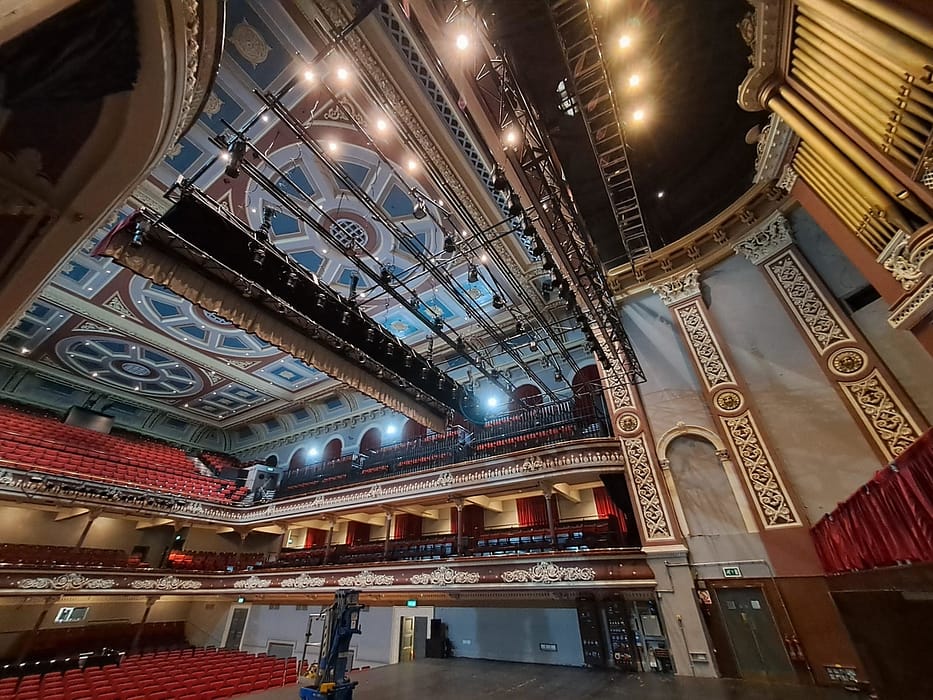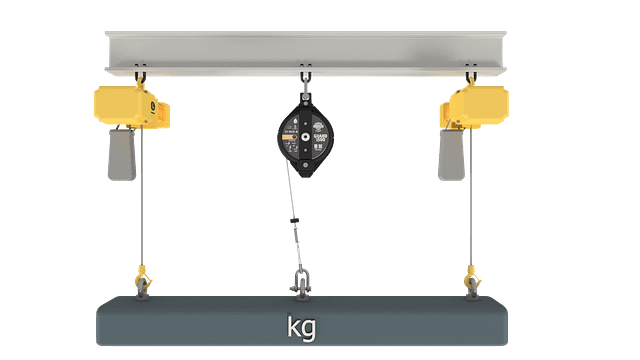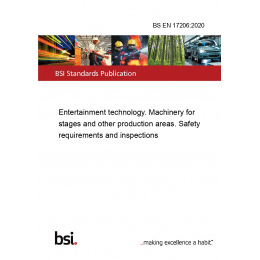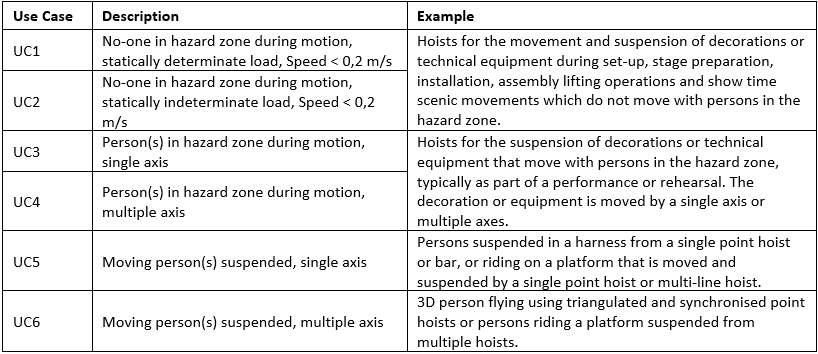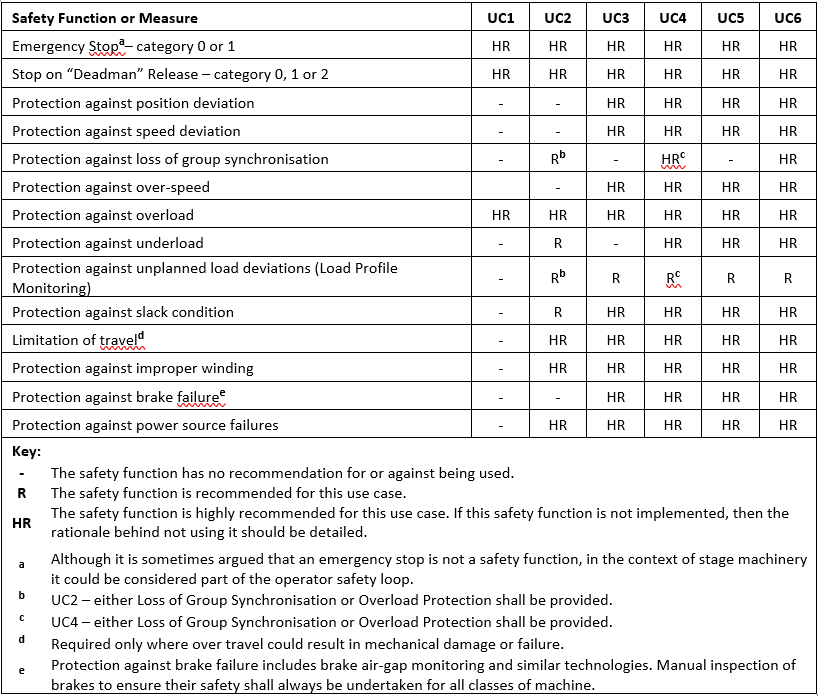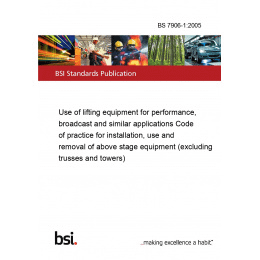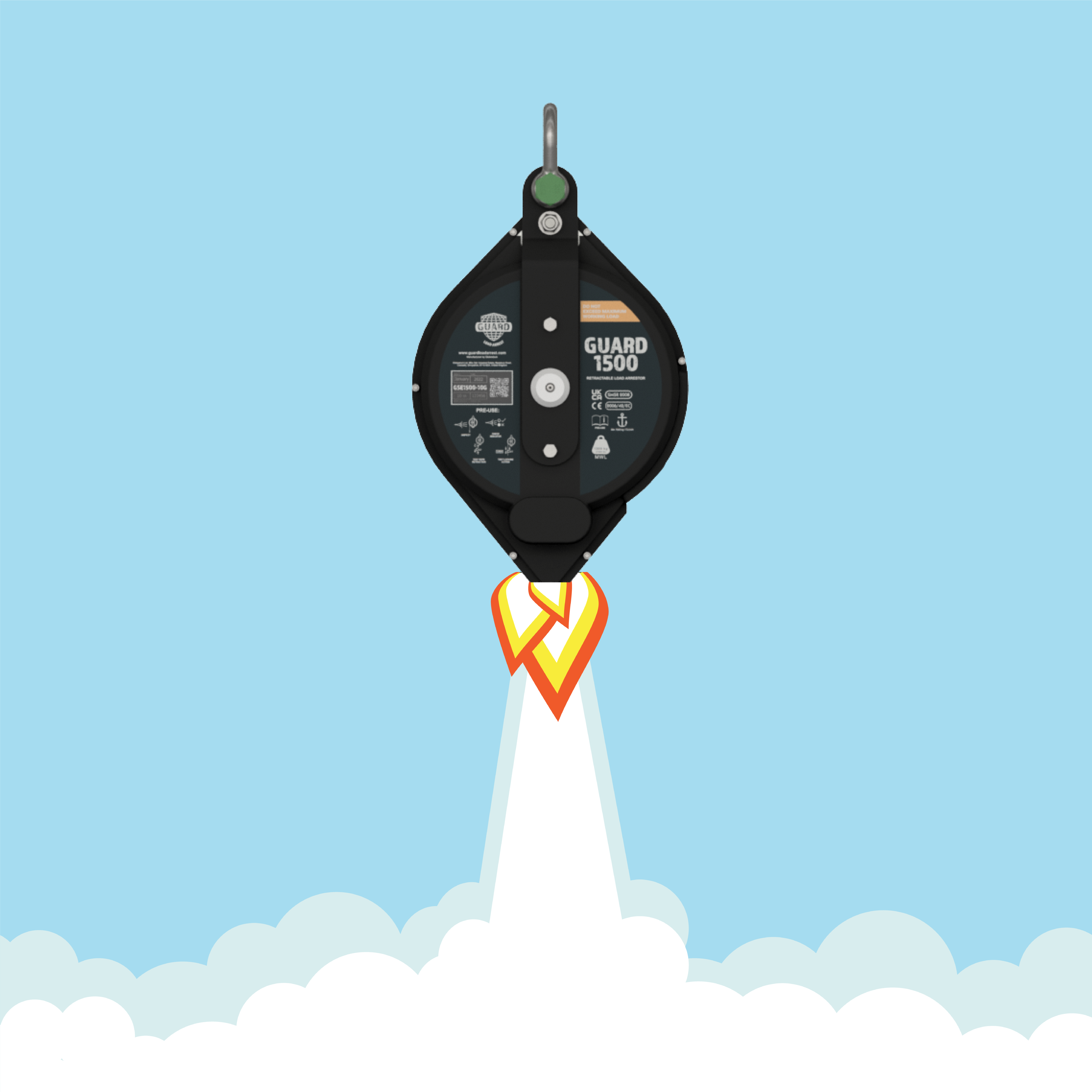Case Study: St George’s Hall
Client: St George’s Hall, Bradford Theatres
Problem:
The concert hall’s engineering team reached the conclusion that, to provide a safe system of work, adding-in Guard Load Arrest protection to the system would be the correct solution. However, with St George’s Hall being an old concert hall, the pipe we had to pass the load arrestor’s cable through was extremely narrow and, when researching the project, no obvious answer became apparent to allow the cable, ferrule, thimble & shackle to pass through the pipe from the anchorage point to the truss below within the theatre.
Solution:
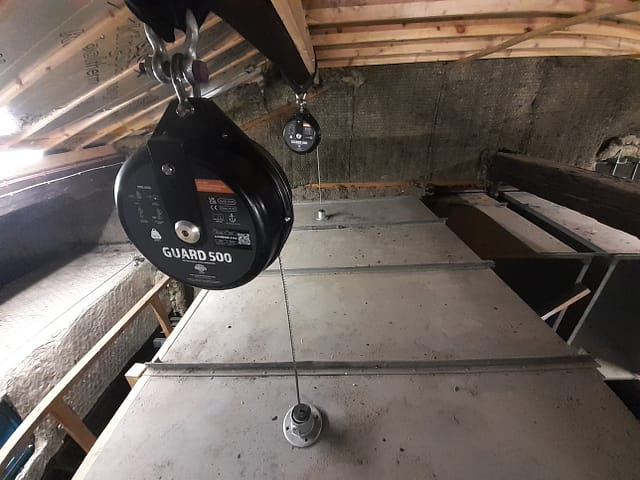
The new configuration of the bottom shackles on Guard Load Arrestors means that the shackle can be easily removed from the cable (the pin fits through the thimble), thereby solving part of the problem.
Due to the pipe being so narrow, the standard thimble still wouldn’t pass through the pipe. However, with Guard Load Arrest being the product manufacturer (with a full understanding of the product’s technical file), we were able to change the thimble to a narrow gauge alternative. This allowed the thimble to fit through the narrow pipe and then the shackle be reattached through the thimble.
This solution was achieved by Guard Load Arrest being able to manufacture the solution in accordance with the technical file and provide a solution that worked precisely for the customer.
Guard Load Arrest se convierte en patrocinador oficial de ABTT
Guard Load Arrest se enorgullece en anunciar que son patrocinadores de la industria de la Asociación de Técnicos de Teatro Británicos (ABTT), una organización de membresía con edificios de teatro y backstage en su corazón.
Guard Load Arrest acaba de lanzarse y ofrece soluciones duraderas de detención de carga para los sectores industriales y de entretenimiento. La gama de productos ofrece protección de 150 kg a 1500 kg, y ya se están realizando desarrollos para ampliar aún más la gama. Guard Load Arrest está ansioso por apoyar a las organizaciones dentro de la industria, por lo que estaba ansioso por suscribirse a esta oportunidad con ABTT.
La ABTT es una organización de miembros que establece y mantiene estándares de excelencia técnica, seguridad y cumplimiento para el teatro y las representaciones en vivo. La organización es un excelente recurso para apoyar a los miembros, a través de la provisión de información y asesoramiento sobre buenas prácticas, trabajo seguro y cumplimiento dentro de la industria del teatro. Asesoran sobre seguridad, planificación y buenas prácticas.
Entre otras cosas, esta asociación ayudará a Guard Load Arrest a resaltar la importancia de los altos estándares de seguridad en la industria del teatro, especialmente con respecto a los equipos suspendidos en altura.
Para obtener más información sobre Guard Load Arrest, visite www.guardloadarrest.com o contacto el equipo bien informado.
Guard Load Arrest Lanzamientos
Guard Load Arrest acaba de lanzarse y ofrece soluciones duraderas de detención de carga para los entretenimiento y industrial sectores.
La gama de productos ofrece protección de 150 kg a 1500 kg, y ya se están realizando desarrollos para ampliar aún más la gama.
Uno de los usos más comunes de los pararrayos de carga es como protección secundaria para polipastos de cadena. Patrick Evans, Director General, explica más:
“EN 17206 estipula que se requieren dos soluciones de seguridad independientes al instalar polipastos eléctricos de cadena. El hecho de que el freno secundario de un polipasto proporcione el nivel necesario de seguridad se reduce a su evaluación de riesgos, pero estamos descubriendo cada vez más que los instaladores están desplegando unidades Guard junto a los polipastos para proporcionar una protección separada, en caso de que falle el sistema primario”.
Por supuesto, los polipastos eléctricos de cadena generalmente cuentan con un freno de seguridad que se activa si falla el freno principal. Pero, ¿cuál es el respaldo si falla la cadena o el ancla del polipasto? Patricio continúa diciendo:
“Hay algunas opciones disponibles, una de las cuales es simplemente conectar un cable de acero fijo como solución de seguridad secundaria. Esto sería extremadamente seguro. Sin embargo, cada vez más usuarios están abandonando este método debido al alto costo de enviar un instalador para desconectar y reparar cada vez que se necesita. Los arrestadores de carga Guard son una opción rentable alternativa que supera este problema al proporcionar un cable de acero que se extiende y retrae automáticamente, siguiendo el movimiento de la carga, sin tener que desconectarse”.
Si falla el equipo de soporte de carga principal, el arrestador de carga Guard detendrá automáticamente la caída de la carga, lo que evitará daños al equipo y, lo que es más importante, protegerá a la audiencia/a los artistas que se encuentran debajo.
No es solo en el sector del entretenimiento donde se instalan cada vez más guardias. Muchos aplicaciones industriales beneficiarse de la detención de la carga. Patrick elabora:
“Hay una gran cantidad de aplicaciones en las que los arrestadores de carga brindan una solución de seguridad ideal. ¿Levantas o suspendes equipos o materiales que no se pueden dejar caer? Si es así, debe considerar instalar un dispositivo de detención de carga Guard como medida de seguridad en caso de que falle el equipo de elevación principal”.
“Las líneas de producción no pueden permitirse largos períodos de parada para reparar equipos caídos. Un gran ejemplo es cómo algunos fabricantes de automóviles dependen de los arrestadores de carga Guard para proteger puntos clave en la línea de producción; sus ingenieros identificaron el riesgo de que el equipo pesado se apague durante el uso, lo que podría resultar en una caída incontrolada al piso del taller. Aquí es donde interviene el sistema de detención de carga Guard. Un dispositivo de detención de carga Guard colocado en el lugar correcto atrapará automáticamente el equipo que cae y evitará que golpee el suelo. ¡Nuestros productos son tan versátiles y confiables que incluso se implementan como protección para levantar materiales radiactivos en ciertas instalaciones de energía nuclear del Reino Unido!”
La lista de clientes de Guard Load Arrest ya es impresionante, incluidos O2 Academy Group y Jaguar Land Rover.
La nueva Rango de Guard está disponible ahora.
¡Hemos logrado el despegue!
Hola Mundo.
Reunir Guard Load Arrest.
Mire este espacio para noticias y artículos sobre la gama de pararrayos de protección.

